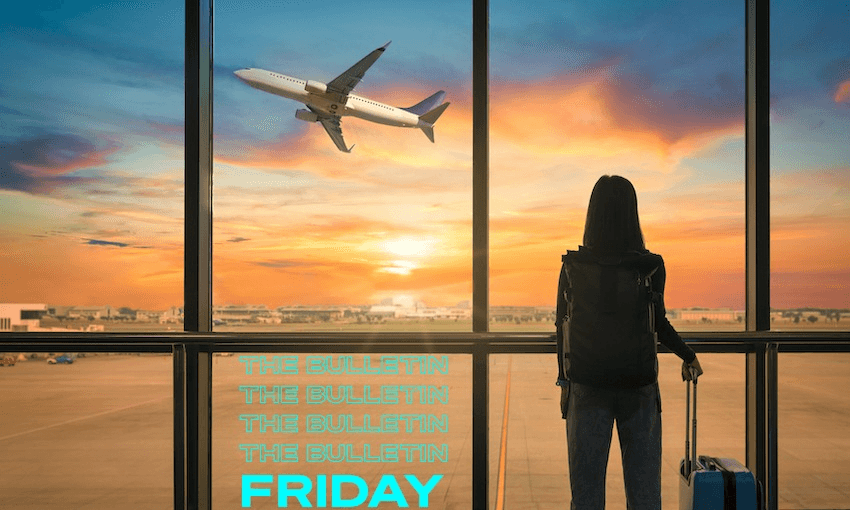The prime minister confirms the government’s border reopening plan won’t be delayed by a new variant or unexpected outbreak this time, Justin Giovannetti writes.
New Zealand’s border reopening will begin in just over three weeks. After the country’s two previous reopening schemes were scuttled by new variants of Covid-19, Jacinda Ardern ruled out any further delays to plans this time. New Zealand is one of the world’s most vaccinated countries and will soon be one of its most boosted: We are ready, she said.
The prime minister unveiled a five step plan that slowly ends the use of managed-isolation between the end of February and October. “These are very firm dates,” she said of the first three steps between the end of this month and April. The last two steps, which allow tourists from the rest of the world, could still be moved but Covid-19 minister Chris Hipkins said any change will likely only bring forward a full reopening.
“There will be life after Covid,” the prime minister said of the plan. “A life where we have adapted. Where we have some normality back, and where the weather can once again take its rightful place as our primary topic of conversation.”
Here’s what you need to know about the five steps:
- Step 1: From February 28 (technically, a minute from midnight the day before) fully vaccinated New Zealanders in Australia, or other eligible travellers, can fly to New Zealand and must self-isolate on arrival.
- Step 2: From March 14 the same group of eligible travellers (citizens, residents and many more) can enter New Zealand from anywhere in the world. People with working holiday visas and critical workers can move here as well.
- Step 3: From April 12 anyone with a temporary visa can enter, that includes up to 5,000 international students.
- Step 4: No later than July, Australians as well as visitors from all visa-wavier countries can enter.
- Step 5: No later than October, anyone with a visitor visa can arrive.
It won’t be business as usual for some time. As Stuff reports, a negative pre-departure test will still be necessary, along with 10 days of self-isolation on arrival. That will drop to seven days to match domestic rules on close contacts when we enter a higher phase of the traffic light system. (The colour, phase and step are all different). Arrivals will also be handed three rapid tests, one for immediate use, another midway through isolation and a spare. The self-isolation requirement could eventually be dropped completely.
Managed-isolation will continue to exist for unvaccinated travellers. A permanent National Quarantine Service will eventually be created to absorb MIQ, the prime minister announced. Most hotels will exit the current system and go back to catering to travellers. However, some will be turned into permanent border facilities that are further upgraded. In the long-run, purpose-built MIQ is now a possibility. The military will also exit the MIQ system and a permanent staff will be hired.
Speaking to The Bulletin, Covid-19 modeller Michael Plank said a permanent system of quarantine might come in handy for the future of the pandemic and others:
“The pandemic isn’t done with us yet and it’s likely we’ll see new variants. We have really good vaccine coverage now and that’s done an amazing job of blunting the health impacts of Covid. But you never know what will crop up with new variants, so having that ability to scale up MIQ when needed is a good backup.”
A more open border likely won’t impact the omicron outbreak much. By the time flights start landing from Australia, Plank said there could be thousands of daily community cases. Adding 500 more a day from visitors who are then in self-isolation likely won’t tip the scales. While daily cases are currently still lower than once expected, they’ve quadrupled in the last week. February 28 is still three weeks away. Plank’s only criticism of the plan is that arrivals should be provided with more rapid tests. “The strength of these tests is that they can be used frequently and easily,” he said.
There has been a strong response, both in New Zealand and overseas. Some New Zealanders who have spent the pandemic unable to see family here say it’s a relief. Others say that while the decision is welcome, they still feel abandoned by their country. The experts say it’s a good approach in the time of omicron. Business leaders are keen that they’ll get to travel the world again to trade the New Zealand brand. Farmers warn it won’t make any difference to the harvest season and a surge of young backpackers showing up to pick kiwifruit is pretty unlikely. Finally, the tourism industry warns that even a shortened self-isolation requirement would destroy any chance of visitors, something they desperately need after two years without.
Rebuilding tourism could be a longer exercise than many expect. Australia reopened its borders to working holiday visa holders and international students in December. Classic backpackers. ABC News reports that only a small fraction of the 175,000 people holding those visas have decided to use them—about 2,000 by late January. The government scrapped the fee to apply and it hasn’t done anything to increase interest. Much of the country’s tourism industry has been left wondering: “So, where the bloody hell are they?” One conclusion has been that two years of “Fortress Australia” has done real damage to the country’s image.
